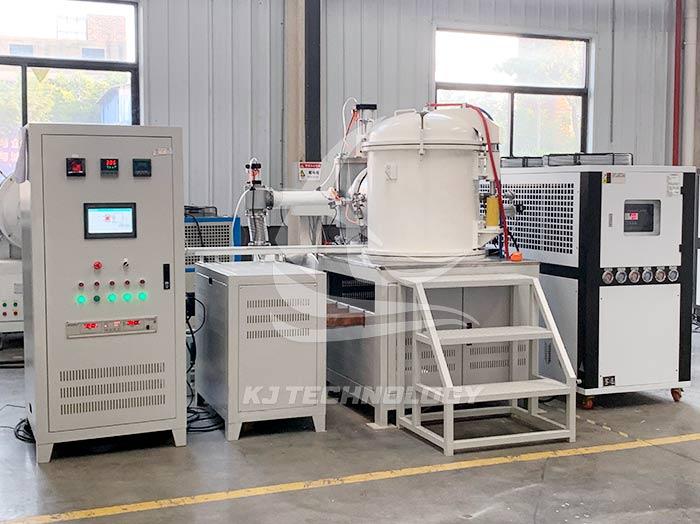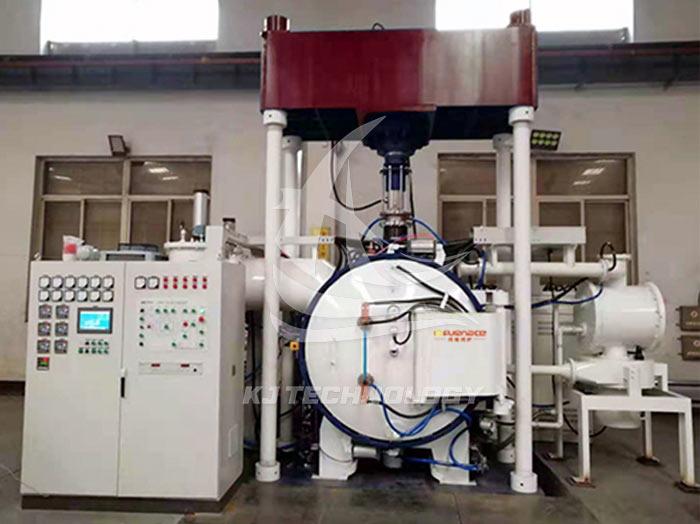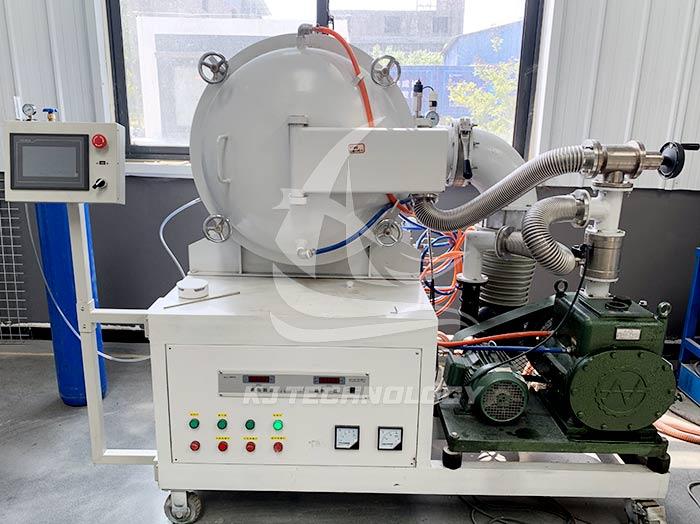The application of vacuum muffle furnace in the battery industry
 08-04-2025 Author: KJ technology
08-04-2025 Author: KJ technology
The vacuum muffle furnace is widely and crucially used in the battery industry, especially in the research and production of lithium-ion batteries and fuel cell materials. Specific application scenarios and advantages are as follows:
1. Preparation of lithium-ion battery materials
Synthesis of positive electrode materials
High nickel ternary materials (such as NCM811): In a vacuum muffle furnace, high-temperature calcination under an oxygen atmosphere (950 ℃/12 hours) can ensure the stability of the Li/Ni layered structure, improve battery specific capacity (up to 220mAh/g), and cycling stability (90% capacity retention after 500 cycles).
Lithium manganese iron phosphate (LMFP): Carbon coating treatment at 700 ℃ can increase the voltage plateau to 4.1V, increase energy density by 15%, and enhance the conductivity and structural stability of the material.
Lithium cobalt oxide (LiCoO ₂): By precise temperature control (± 1 ℃) in a vacuum environment, the crystal structure can be optimized and the charging and discharging efficiency can be improved (Li ⁺ diffusion coefficient reaches 10 ⁻¹¹ cm ²/s).
Negative electrode material processing
Graphite negative electrode: High temperature graphitization treatment (2800 ℃) in a vacuum muffle furnace can improve the crystallinity and conductivity of graphite, reduce battery internal resistance, and improve charge and discharge efficiency.
Silicon based negative electrode: Through vacuum pyrolysis polymerization technology, polyacrylonitrile (PAN) fibers are converted into carbon fibers (modulus 230GPa, density 1.8g/cm ³) as the conductive skeleton of the silicon-based negative electrode, alleviating the problem of volume expansion.
Preparation of Solid Electrolytes
LLZO ceramic electrolyte: By holding at 1150 ℃ for 24 hours, a ceramic electrolyte with a density>95% TD can be produced, with an ion conductivity of 10 ⁻⁴ S/cm (2 orders of magnitude higher than traditional methods), providing key material support for all solid state batteries.
2. Research and development of fuel cell materials
Optimization of electrocatalysts
Platinum based catalyst (Pt/C): By heat treatment at 300 ℃ in a vacuum muffle furnace, the Pt particle size can be controlled at 3nm, and the mass activity can be increased to 0.4A/mg ₚₜ, significantly reducing the cost of fuel cells.
Perovskite type catalysts (such as LSM): sintered at 1200 ℃, with a conductivity of up to 200S/cm and a power density of 0.8W/cm ² at 700 ℃, improving the output performance of fuel cells.
Proton exchange membrane (PEM) treatment
In a vacuum environment, precise temperature control (± 0.5 ℃) and atmosphere control (such as hydrogen reduction) can optimize the distribution of sulfonic acid groups in PEM, improve proton conductivity (up to 0.1 S/cm or more), and extend the life of fuel cells.
3. Technological advantages and industry value
Precise temperature control and atmosphere control
The vacuum muffle furnace achieves temperature fluctuations of ≤± 1 ℃ through a PID intelligent temperature control system, ensuring the uniformity of material synthesis.
Support independent or mixed introduction of atmospheres such as oxygen, nitrogen, hydrogen, etc., to meet the stringent requirements of different materials for atmospheres (such as oxygen atmosphere calcination of high nickel ternary materials).
Avoid oxidation and impurity contamination
A vacuum environment (vacuum degree ≤ 10 ⁻³ Pa) can effectively prevent metal materials (such as lithium and cobalt) from oxidizing at high temperatures, reduce impurity generation, and improve material purity (>99%).
Suitable for oxygen sensitive materials such as silicon-based negative electrodes and solid electrolytes, ensuring the intrinsic properties of the material.
Efficient energy saving and large-scale production
Adopting a ceramic fiber furnace body, the heat capacity is reduced by 60%, the heating rate is increased to 20 ℃/min, energy consumption is reduced by 40%, and the research and development cycle is shortened.
Support uniform sintering of large-sized samples (such as 50mm × 50mm ceramic tiles) to meet the requirements of pilot scale and large-scale production.








